SANT CUGAT, CATALONIA — The narrow, corkscrew highway I’m nervously navigating is known as the Via Romanesque (Road) and it zigzags through the Pyrenees, dipping dramatically into the bosom of the great mountain range before rising again as high as the pointed peaks.
My pulse quickens every time my little rental dives into one of the many hairpin turns — this must be the road where Spain’s two-time Formula 1 world auto racing champion Fernando Alonso perfected his driving skills.
Every so often, a yawning mountain tunnel swallows my little car and spits me out into Medieval Catalonia where the parched landscape has changed little over time and remains punctuated by the ancient Romanesque architecture I’ve come to admire — churches, castles and villages dating back to the 10th century.

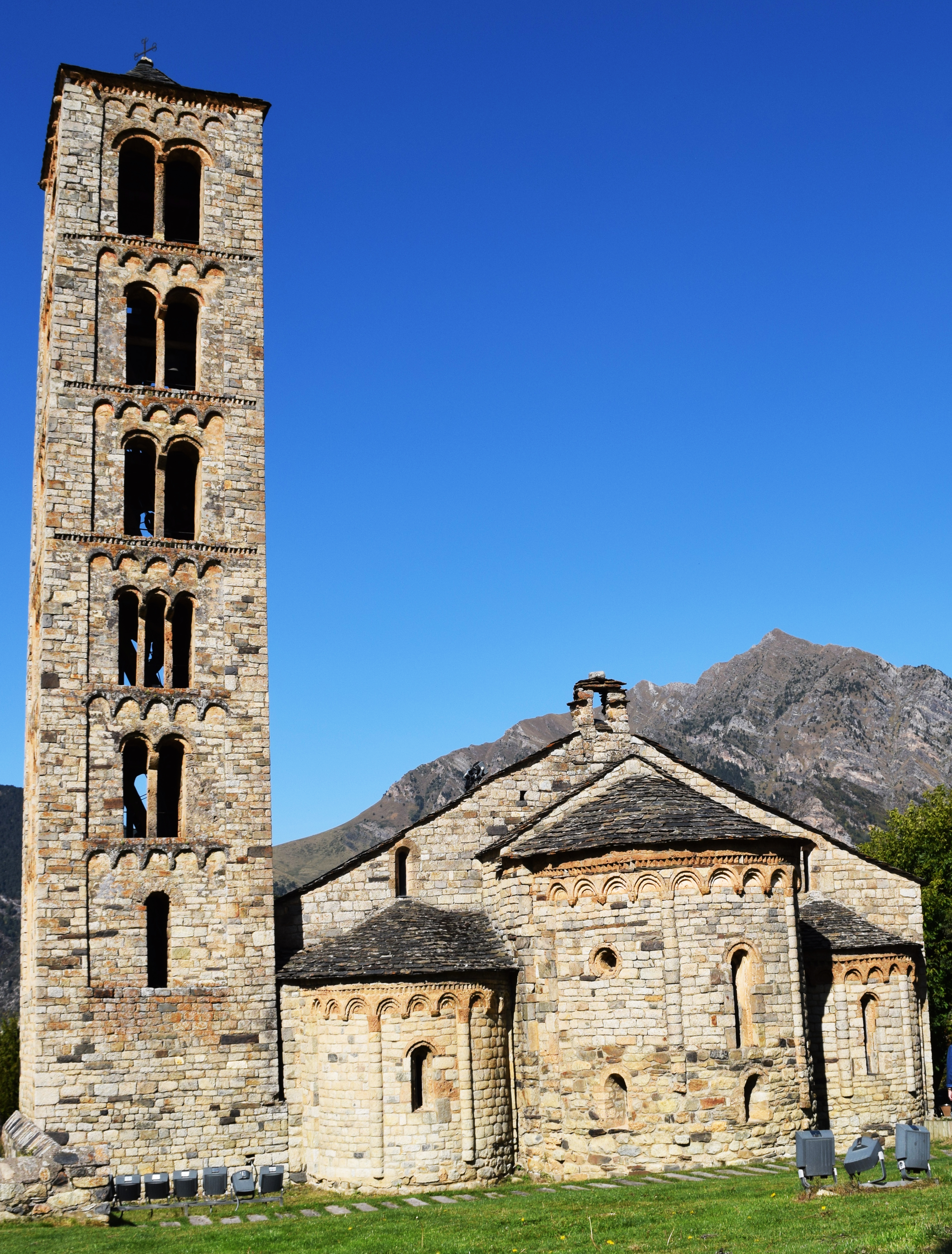
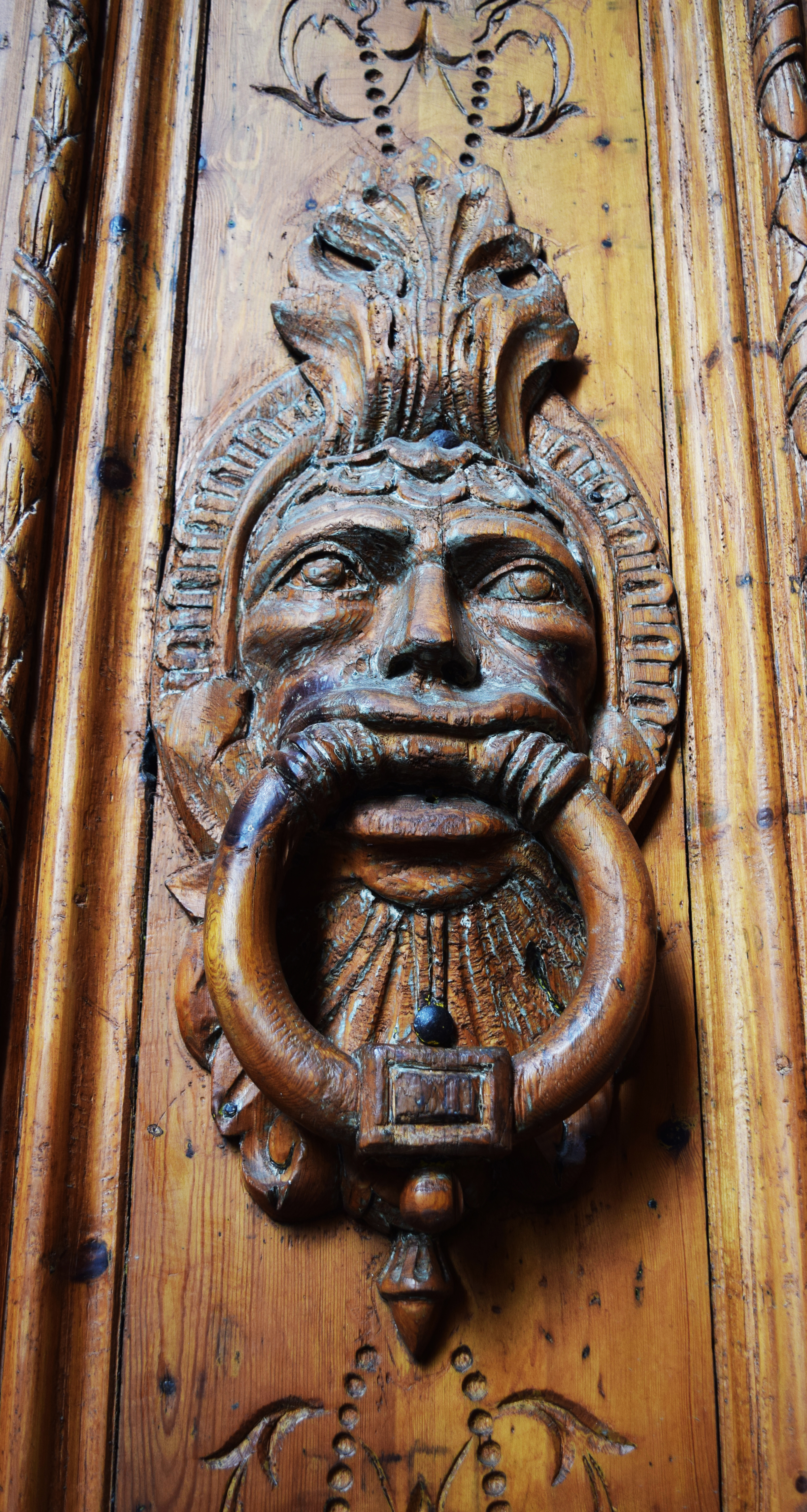
Left: Catalonia's landscape is dotted with many Romanesque churches. Centre: Church towers were used for communications. Right: Behind the ornate doors were many Catalonia secrets.
Stone towers — they pop up like pins on a map — are my guide on this five day, 854-kilometre journey back in time. I follow them to the entrances of Catalonia’s treasured Romanic relics, some of which are recognized as UNESCO World Heritage Sites.
The thrilling back roads don’t just connect the dots, though. They also introduce me to Catalonia’s small rural towns that look frozen in time, the region’s unique culture, its pre-historic treasures — dinosaur footprints everywhere — its remarkable food (the tapas, croquettes, Iberian ham and cheeses from here are so good) and it’s fiercely proud, independently-minded people who make strangers feel so welcome.
My journey starts in Barcelona, Catalonia’s breathtaking capital, where I visit my first Romanesque treasure — an ancient burial slab dedicated to a former count of Barcelona, Guifré II, who died in 911AD. The burial slab rests inside the Sant Pau del Camp monastery, the city’s oldest church which is located in Barcelona’s vibrant Gothic Quarter, off the famous tourist walking street La Rambla.
My visit to Sant Pau del Camp only whets my appetite for more Romanesque architecture, which emerged around the 10th century throughout Europe and eventually evolved into the Gothic style in the 12th century. The best examples of original Romanesque architecture can be found in rural Catalonia, which was a collection of counties in Medieval times. The counts back then wanted to show Rome their commitment to Catholicism, so they erected some impressive churches and monasteries in the more artistic Lombard Romanesque design — smooth walls subdivided by pilasters and decorated with blind arches and doors with mouldings.
So, the next day I set out in the direction of Vic, a handsome city first settled by the Romans around 300AD that’s sandwiched between Barcelona and Girona, where a museum dedicated to Catalonia’s Romanesque architecture and art is located.
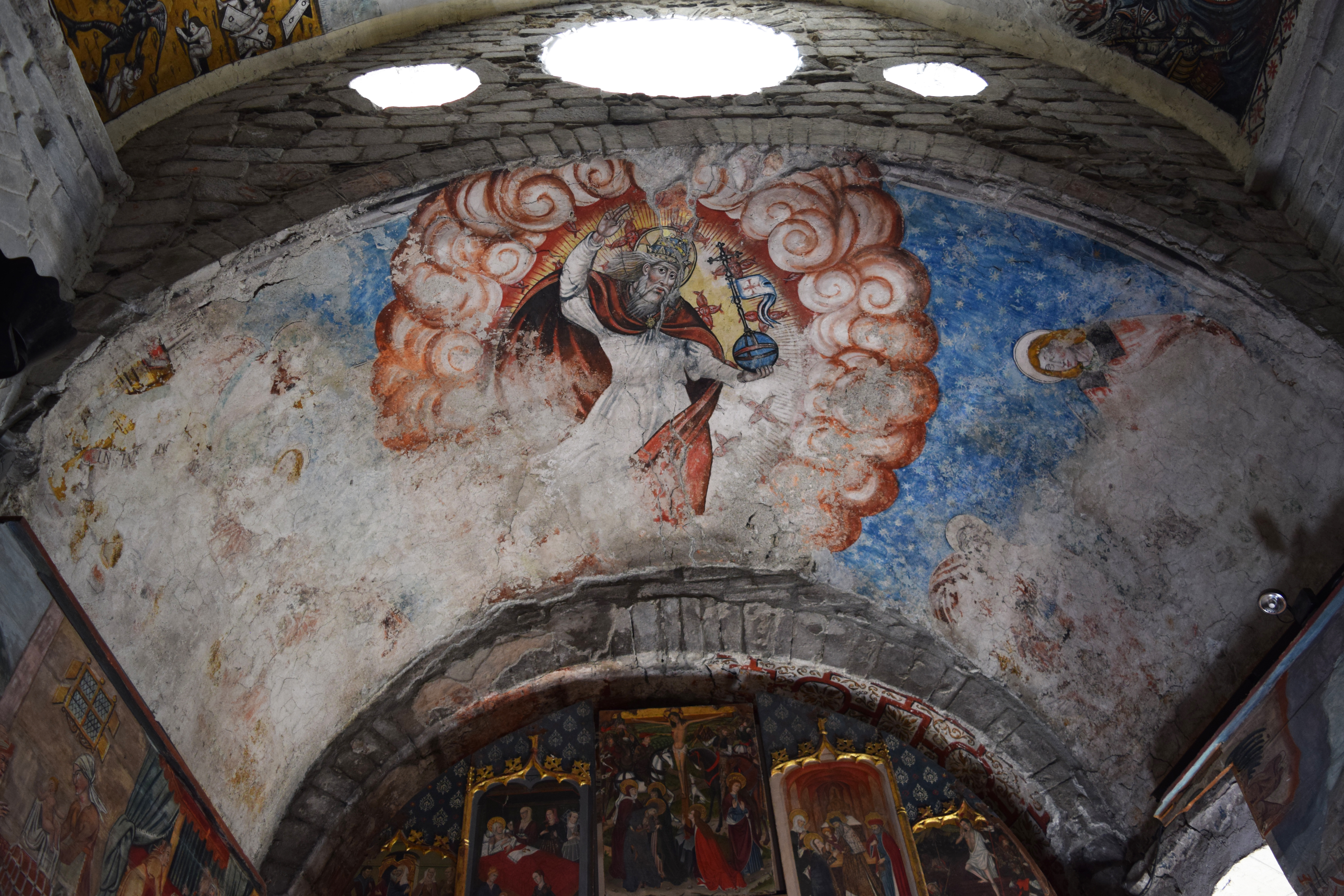
Above: Just faded copies of the original frescoes remain - originals were moved to national museum.
The landscape outside Barcelona features lots of cacti and palms and the well-marked divided highway I’m driving is canopied by plane trees. The Pyrenees are silhouetted on the horizon in my windscreen and I’m being lulled into a false sense that the entire five-day drive will be this easy — wrong!
The Episcopal Museum located in Vic’s Old Town dates back to 1891 but moved to its present modern location in 2002. The Old Town is also where I find the city’s perfectly-preserved Roman temple.
The museum houses over 6,000 pieces of rare Romanesque art — a wooden depiction of the Crucifixion featuring five individual figures is its most eye-catching exhibition. Alter pieces, paintings and statues, all dating back to the 10th to12th centuries, which once decorated Romanesque churches throughout Catalonia, now have been moved here or to Barcelona’s magnificent National Museum of Art for safekeeping.
Vic’s Romanesque cathedral sits right next to the museum so I’m invited to make the dizzying climb up a narrow spiral staircase to reach the top of its bell tower. I’m glad I do because the view I get from the lofty height — the tower is the highest of its kind in Catalonia — is truly breathtaking. The city and countryside spread out below the tower and from it I see Vic’s dynamic main square that’s surrounded by candy-coloured buildings.
Three of the tower’s original 11th century bells remain in working order and as much as I’d like to spend more time in this inviting city, another Romanesque treasure — the Monastery of St. Peter de Casserres — awaits 30 minutes down the road in Carretera.
The highway outside Vic suddenly turns challenging — more twists and turns as I drive into the foothills of the Pyrenees. And the scenery here is much more imposing — lots of rocky outcrops and deep gorges.
After parking the car, I trek along a narrow ledge overlooking a reservoir — it feeds Barcelona — to reach the entrance of the former Benedictine monastery that was once home to 12 monks back in 1053 when it opened. While most Romanic churches are long and narrow, St. Peter, because of its confined space atop the rocky cliff, is wider than it is long. It took 100 years to complete but was left to decay after being abandoned in the 15th century. A restoration project between 1994 and 1995 has restored its glory — the cloister, priory chamber, dormitory, kitchen, storage vault and scriptorium where the monks illustrated precious books look as good as new.
While Catalonia’s Romanesque churches and cathedrals look much the same, each, I discover, has its own identity and some interesting stories and characters connected to them. Take St. Peter de Casserres, for example.
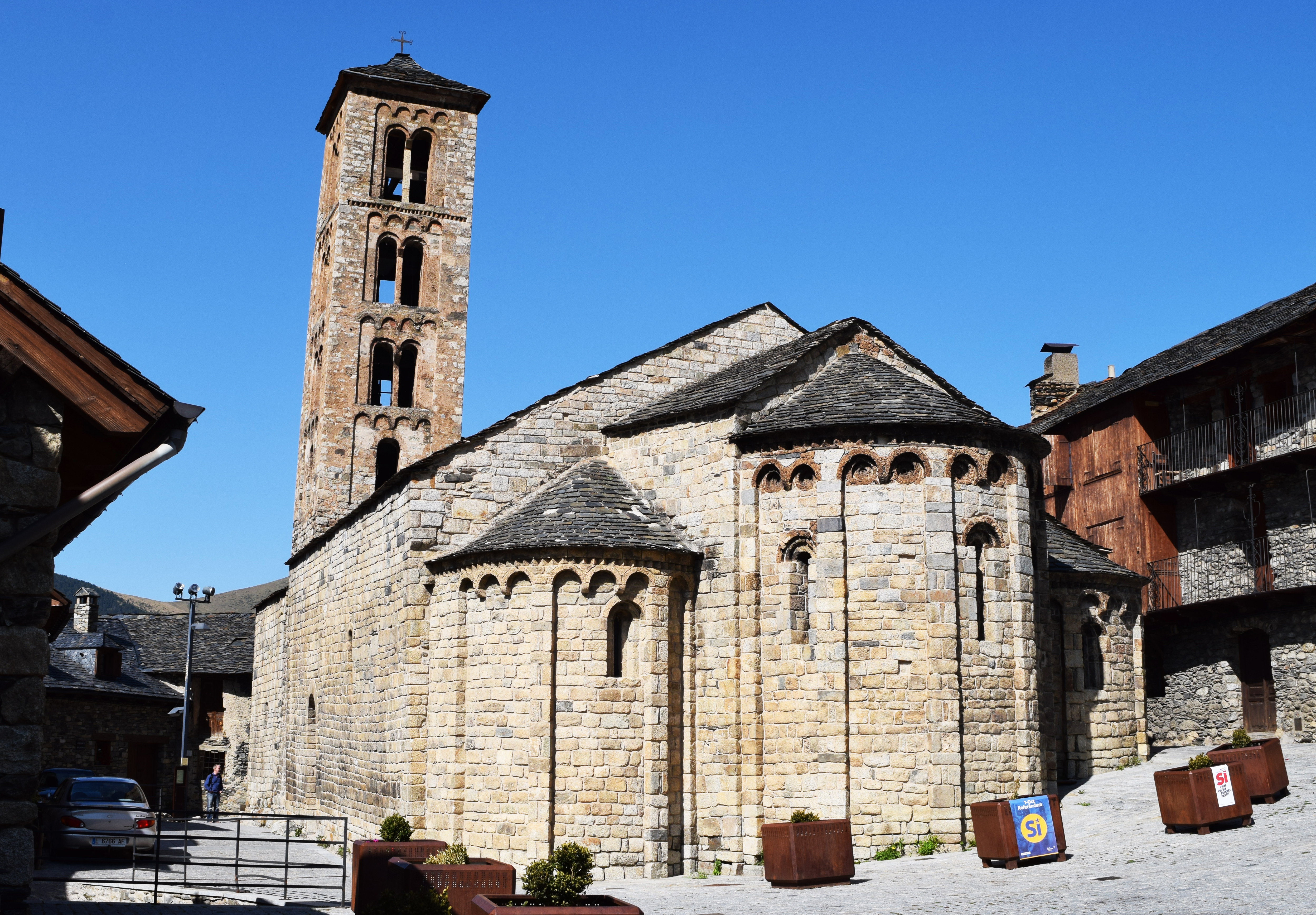
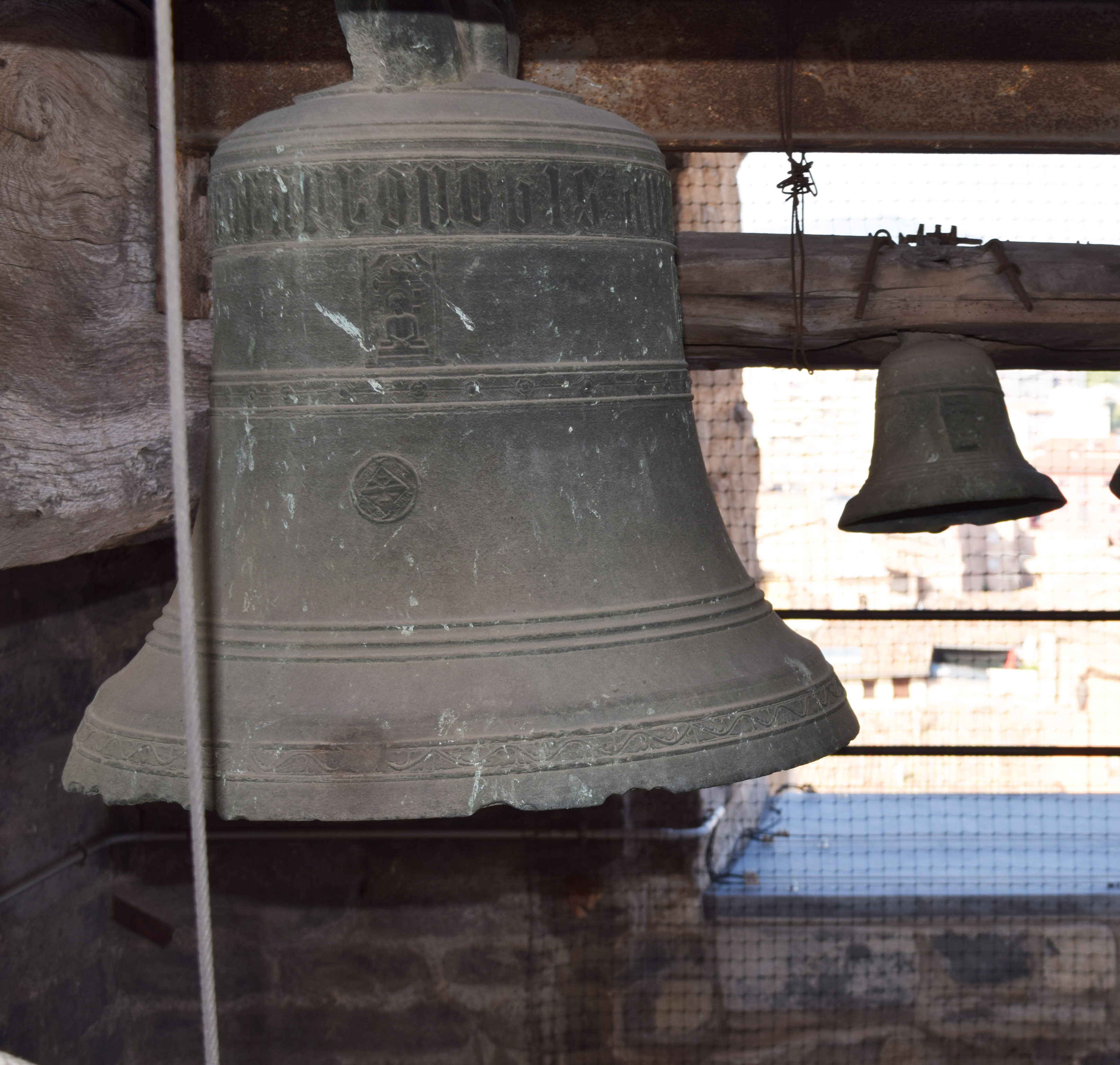
Left: Only a few Romanesque churches were built inside villages. Right: Some original bells still remain.
“The church was built on the orders of a count, whose son, just three days after being born, apparently spoke and told his father he would live only 30 days,” Silvia, my guide, tells me.
“The son instructed that after his death his body should be placed on a mule and wherever the beast stopped, then a monastery dedicated to St. Peter should be built. The mule stopped here and the father obviously complied with the boy’s wishes. The boy’s remains were actually kept in the alter by the monks for decades,” says Silvia.
I didn’t have the heart to tell Silvia that had the mule not stopped, it would have plunged into the deep gorge.
Afterwards, I enjoy a delightful lunch at the Parador Vic-Sau, a charming boutique hotel that sits at the base of the mountain where the monastery is located. The view of the surrounding milky-white cliffs and reservoir from the elevated main dining room is truly spectacular.
The rest of my stops along my Romanesque journey are just as interesting:
• In Ripoll, a handsome town on the banks of the River Ter, I visit the tomb of Count Wilfred the Hairy — he apparently had a lot of hair — in the beautiful Monastery of Santa Maria, which he founded in 888. The count is revered because he gave Catalonia its flag; as Wilfred the Hairy lie dying after a battle, he dabbed four fingers in his own blood and ran them down a mustard coloured cloth, which Catalonia’s flag is based on today. More than 100 monks lived in the monastery during its glory days and produced important manuscripts from the 10th to 12th century — many were stolen during the Napoleonic Wars and have never been seen again. The monastery’s ornately decorated portal is its most stunning feature — delicate carvings tell the story of the Bible. The cloister showcases three original columns and one of its original bell towers is still functioning
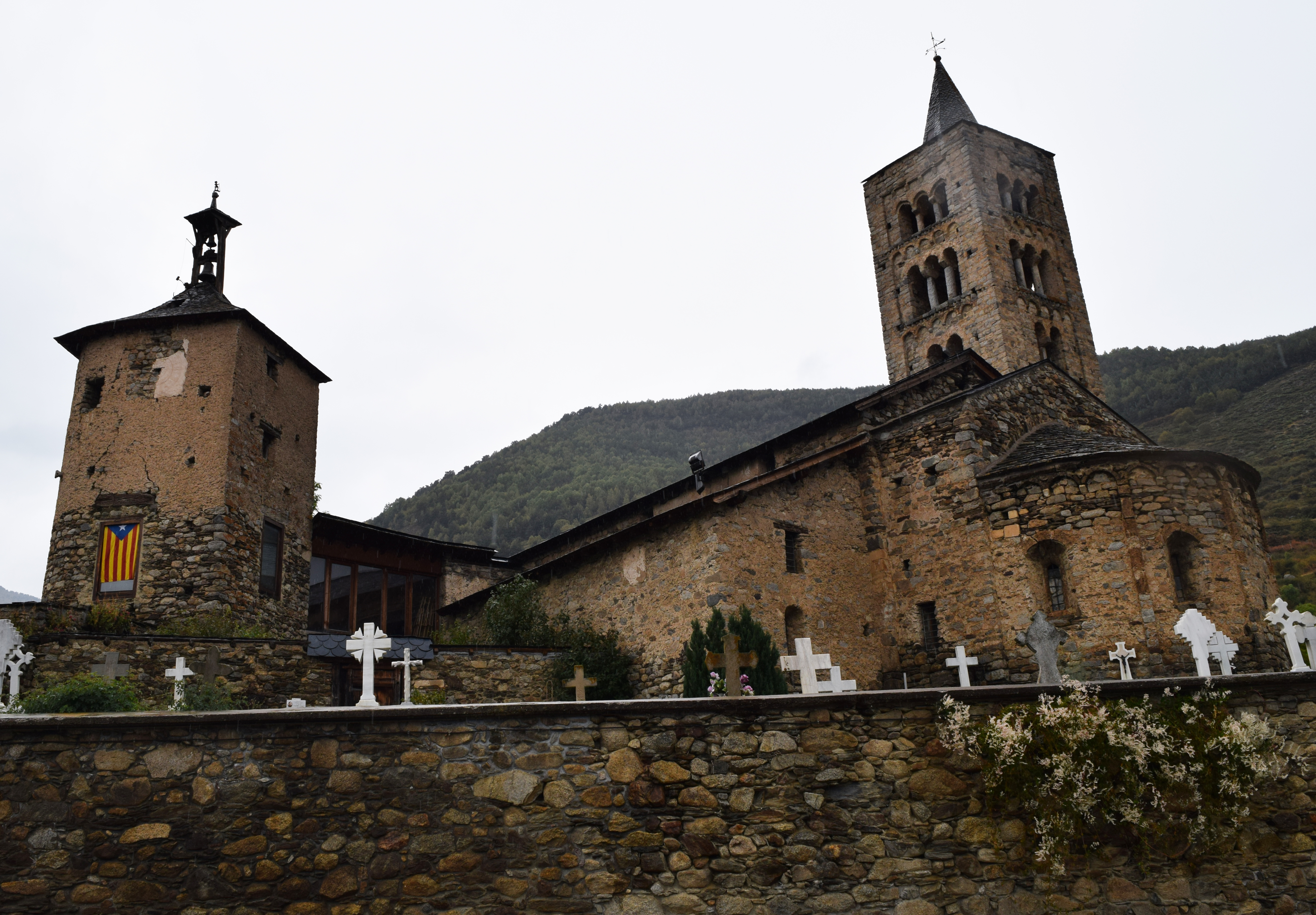
Above: The Romanic site of Son del Pi is a hidden gem that's well worth the effort to reach.
• In La Seu d’Urgell, a lovely town in the heart of the Pyrenees, I’m impressed by the Cathedral Santa Maria d’Urgell, which dominates the Old Town square. The stately structure stands on the same land where the Romans erected a temple. The present day version has a lot of Gothic design incorporated into its walls and showcases lots of 12th-century paintings. While just a hint of the amazing frescos remain, a guide tells me that at one time the entire interior and exterior of these Romanesque churches would have been painted. The town is also famous for producing three saints — St. Ot (the patron saint of rain), St. Ernengol (the patriot saint of droughts) and St. Emigdi (the enginering saint who produced bridges and canals). This outdoor paradise also hosted the white water canoeing and kayaking events at the 1982 Barcelona Summer Olympics and remains a training centre for many national teams, including Canada’s. The massive cathedral stays true to the Holy Trinity — it features three entrances, three naves and its bell tower stands 23 metres high. Next to Santa Maria stands the palace of the Bishop of Aragon, an autonomous state that resides inside Catalonia.
• In Sort, I stop for lunch at a charming restaurant called Pessets and enjoy a meal highlighted by the area’s delicious traditional sausages. A group of elderly Catalonian tourists entertain me with patriotic folk songs and I salute them with a glass of Catalonia’s excellent wine. There are many examples of Romanesque architecture in this forested area known as Pallars Sobirá, and the best is the Church of Santa Maria de Ribera de Cardós — its bell tower, rose window and main apse were all built in the Romanesque style.
• In Son, I leave the main highway and climb to the top of another winding road to reach the Romanic site of Son del Pi. From here I get jaw-dropping views of the Pyrenees and its lush valleys. The small temple was built between the 11th and 12th centuries and consists of a single nave. Its apse also features arches decorated in the Lombard style. Its most striking feature, though, is a slender square belfry with an interior staircase. Inside, there’s a 15th-century Gothic altarpiece depicting 23 different biblical scenes.
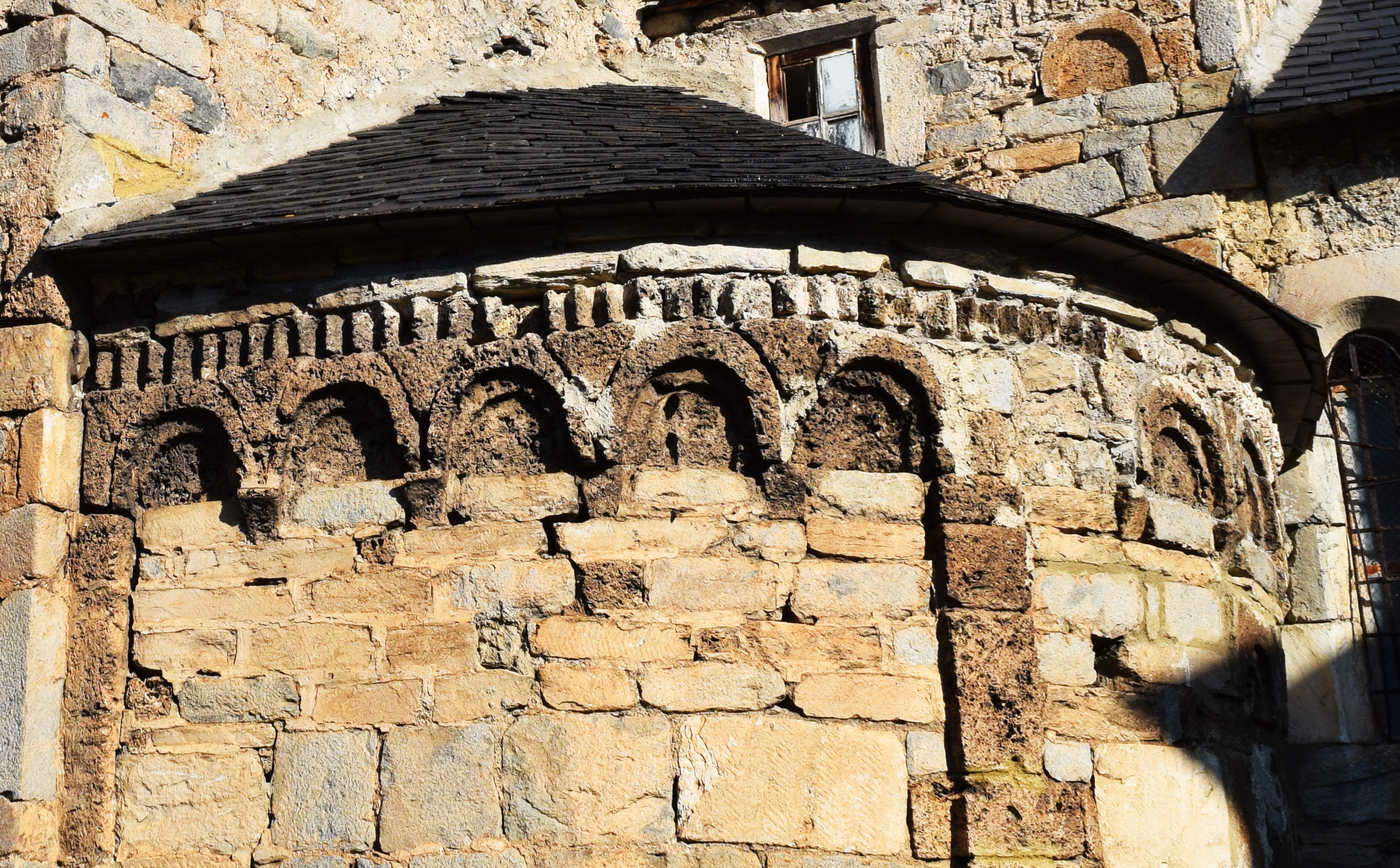
Above: Catalonians preferred the Lombard style of Romanesque architecture that featured arches.
• In Arties, I discover I’m no longer in Catalonia but in Aran, the tiny but affluent principality — much like Monaco — tucked away in the Pyrenees bordering France to the north and Aragon to the west. Known as the Vall d’Aran, this is where some of Europe’s best ski resorts are located. It’s also where I find some great examples of Romanesque architecture in the form of Santa Maria d’Aries and Sant Andreu de Saladú i Santa Eulàlla d’Unha (St. Andrew for short). What makes these two churches so important is they still feature lots of original wall art. “There are many others hidden under the plaster but retrieving them takes time and lots of money,” Lola, my guide, tells me. Some of the paintings remain vibrant. “They ground rare minerals that are only found in the Pyrenees and mixed them with water to produce paint,” says Lola. At one time there were many of these Romanesque churches scattered throughout the Vall d’Aran and “their towers were used to warn of invasions,” says the guide.
• In the beautiful Vall de Boi, I discover the motherlode of Romanesque architecture — nine churches that sit in a picturesque Pyrenees valley outside the small town of Barruero. I spend the day exploring four of the most famous with a Romanic expert named Anna Monsó.
First stop: Santa Eulàlia d’drill la Vall church, which sits beside an information centre. Using interactive exhibits, it tells visitors why so many Romanesque churches were built here and how the counts stole land from their subjects to increase their own wealth and power. Inside Santa Eulàlia, I find the original stone alter and baptismal font and a replica of the wooden crucifixion scene that impressed me in Vic. The church’s bell tower stands 24 metres high and was used mainly for communication and defensive purposes.
Next, Sant Joan de Boi, where Anna points out the irregular shapes of animals in the faded frescos. “The artists only knew of these animals from the stories they were told, so that’s why the elephant has horns on top of its heads,” she smiles. This, like the other 10th-century temples I visit, was also used as a community meeting hall and “they even stored grain here in the winter,” Anna tells me. A lovely village has grown up around San Joan de Boi and it’s a nice place to wander before walking to Sant Climent church, the most revered of all the Romanesque relics.
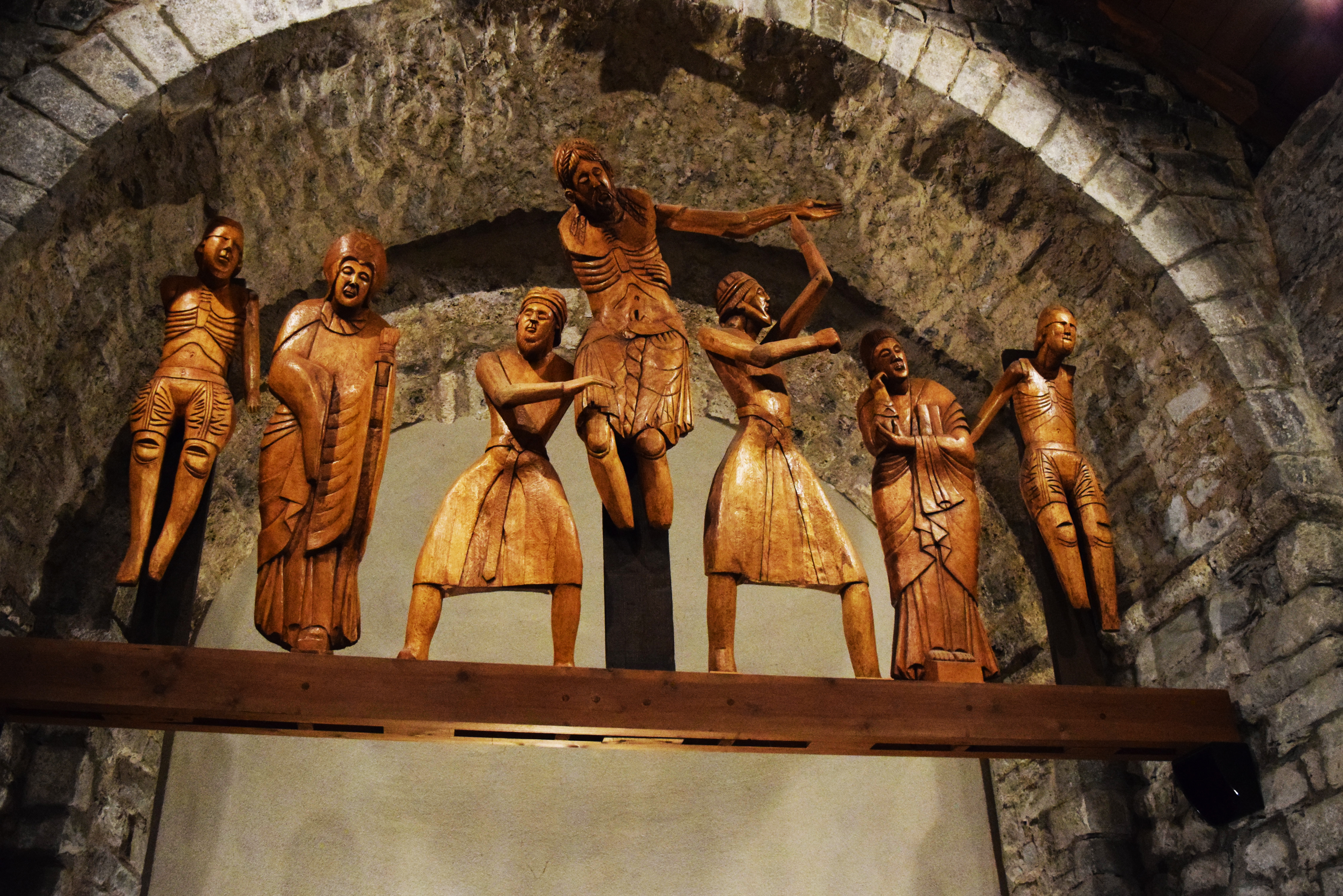
Above: A wooden sculpture of Jesus' death on the Cross is one of the most treasured of the Romanesque relics.
At St. Climent we encounter a large group of Japanese tourists. “A famous Japanese photographer once visited our valley and published a book on the Romanesque churches he photographed. The Japanese have been coming ever since,” Anna says. Sant Climent, which was consecrated in 1123, features its original alter and a 13th century bench reserved for the church’s hierarchy. An audio-visual system shows how the church once looked when its walls were completely decorated with frescos. Awesome!
A short walk away from Sant Climent, Anna introduces me to Santa Maria de Taüll, a unique church in that it sits in the middle of a stone village. “Most villages were built before the churches but this town was built around Santa Maria,” says Anna. The columns inside the church are bent like an old man’s legs — “they had to wrap the entire church with special supports to ensure it does not fall.”

Above: Columns in the Romanesque monasteries told the story of the Bible.
• On the way to Tremp, where the Romanesque Castell d’en Mur sits, I drive through a semi-arid region of Catalonia that looks like the Arizona desert — large red rocks shaped into animal forms by the elements dominate the landscape.
The ruins of the 11th-century Castell d’en Mur and the Benedictine church that sits beside it, stand atop a remote mountain overlooking a vast valley. Both the castle and church were built from the same massive slab of rock that separates the two Romanesque ruins. While the roofless castle fell in on itself after being abandoned in the 15th-century, the church remains pretty much intact. Only 20 people ever lived in the castle and just a few monks manned the church, whose priceless frescos were sold off in 1919 for the equivalent of 42 euros (less the $100 Cdn.) in today’s money, and eventually found their way to a Boston museum, where they still reside today.
• My last stop before returning to Barcelona is the massive Sant Cugat monastery in the town of the same name — just 17 kilometres from Catalonia’s capital. The beautiful monastery, which sits in the city’s historic area, was started in the 11th-century and completed in the 13th. The Benedictine monks who built it actually arrived here in 985AD but records show the Romans occupied this area as early as the 3rd-century. The structure was partially destroyed in the Spanish Civil War but its beautiful cloister still features 144 original capitals. Some carvings tell the story of the bible, some warn monks of the evil waiting outside the monastery walls, others refer to mythological figures and one honours the man who created them — he worked on them for 20 years.
Finally back in Barcelona, I visit the castle-like Museu Nacional d’Art de Catalunya, a treasure chest of Romanesque relics that was built as a pavilion for the city’s 1929 World’s Fair. It occupies a spectacular vantage point atop a hill overlooking one of Europe’s most fascinating cities. The frescos and wall art removed from the churches are now displayed in the National Museum’s 16-gallery Romanesque section.
Lia, a museum guide, says Italian experts were hired to painstakingly remove the frescos and wall art from their original places and reassembled here.
“The movement to research, reclaim and preserve Catalonia’s art, poetry, literature and especially our architecture was started in 1833 by Barcelona’s elite and wealthy,” says Lia.
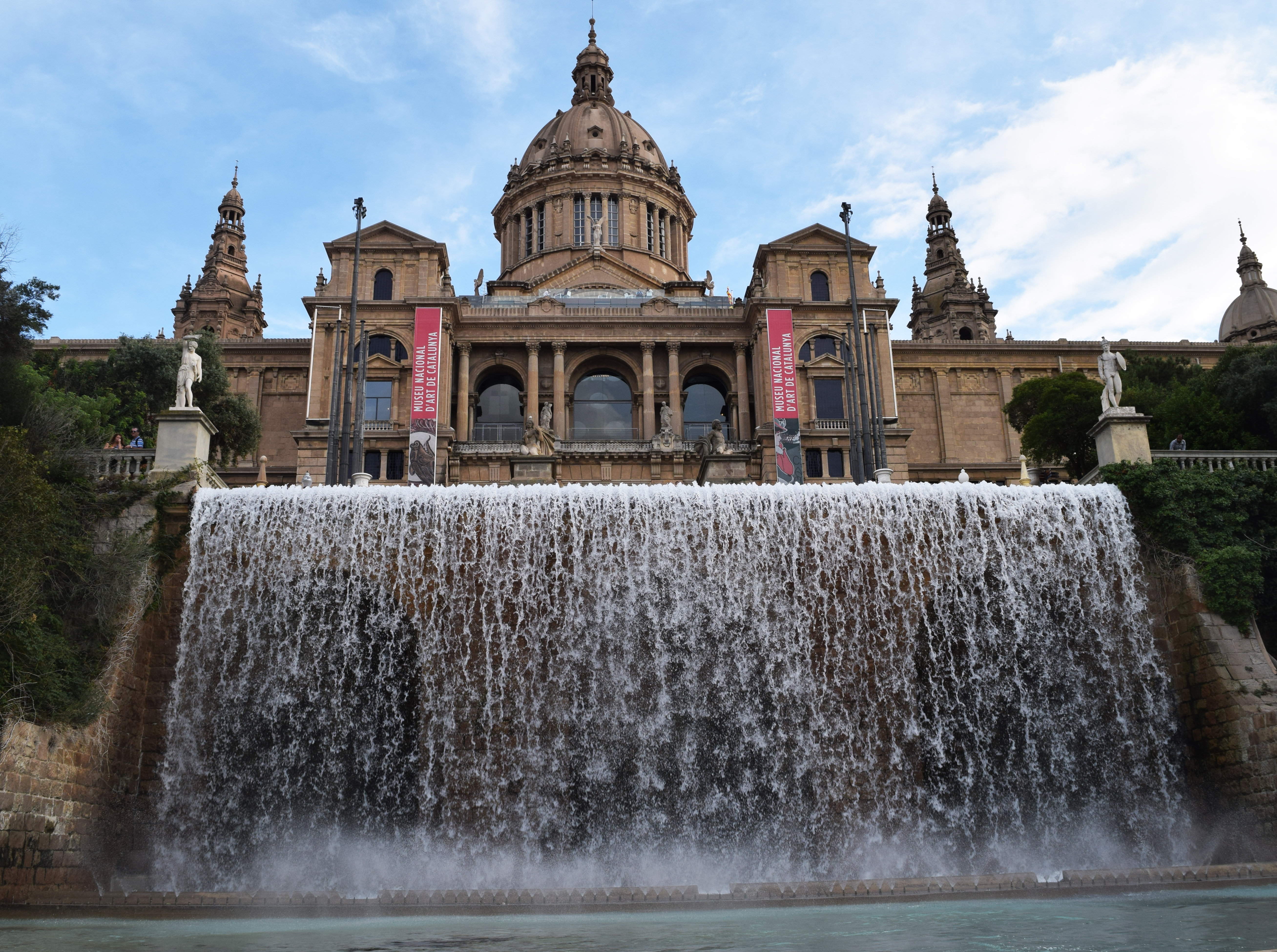
Above: Most of the original works were moved from Romanesque sites to Barcelona's National Museum.
Walls in the exhibition areas are painted a muted grey to resemble the interiors of the ancient churches and monasteries.
Looking at the remarkable works, one can see how art in Medieval times evolved — crude animal and human features depicted in art from the 10th and 11th centuries become more life-like and softer in paintings from the 13th century.
The museum showcases more than 4,000 Catalonian treasures, but the Romanesque exhibits are by far the most popular.
A lover of Romanesque architecture could easily visit the National Museum and be thoroughly fulfilled. However, by doing that, they’d miss the thrill of driving back in time along Catalonia’s thrilling Via Romanesque.
I can assure you, it’s a trip of a lifetime.